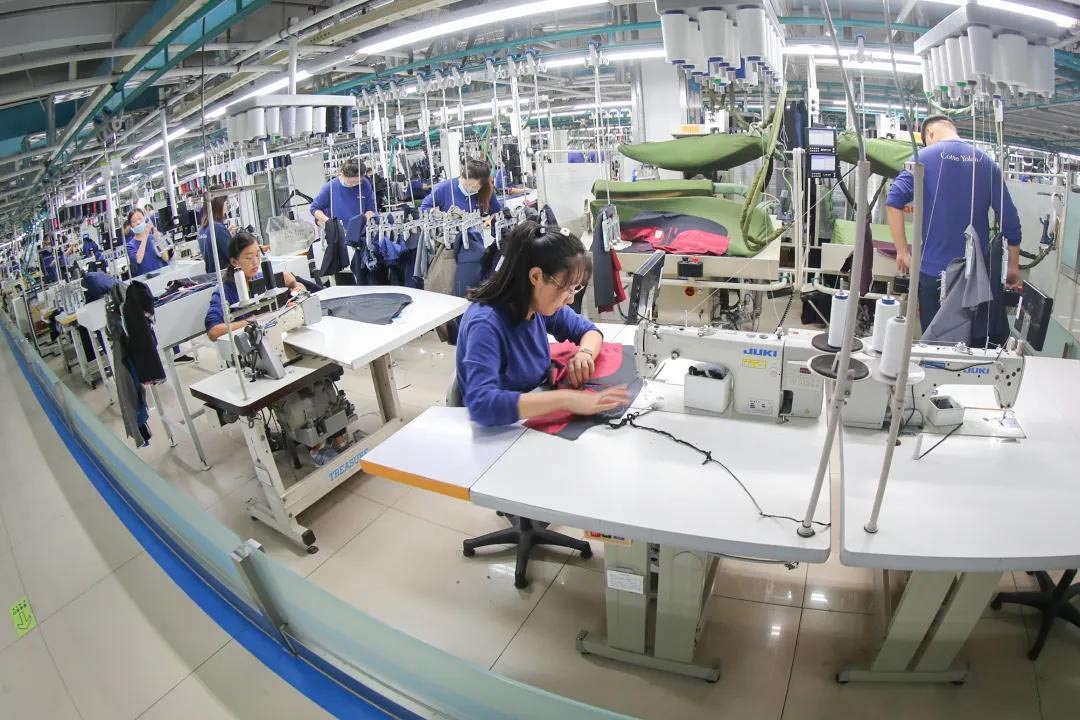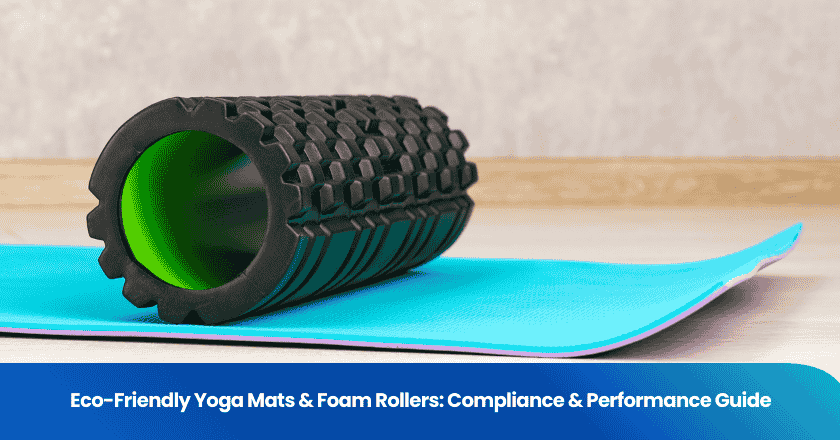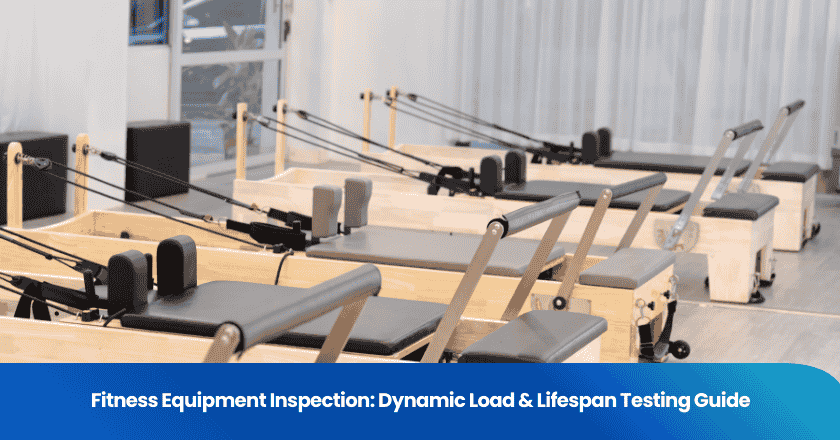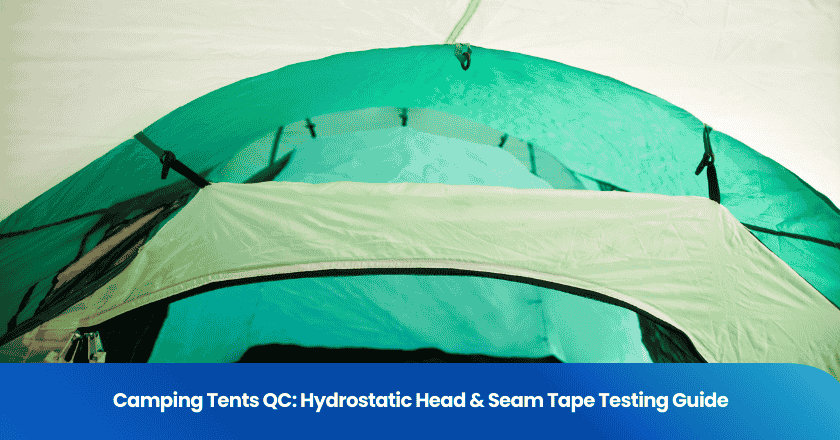
I. Development Trend of China Clothing Manufacturers
In recent years, china clothing manufacturers have experienced significant development, becoming the world's largest clothing production and export country.
With the advancement of technology and changes in market demand, manufacturers are constantly innovating and actively adopting automation and intelligent manufacturing technologies to improve production efficiency and product quality.
The Chinese government is also actively promoting industrial upgrading and environmental protection policies to promote sustainable development.
Against this backdrop, China clothing manufacturers are showing strong resilience and adaptability, maintaining their leading position in the global market despite the challenges of global economic fluctuations and international trade environment.
China clothing manufacturers are undergoing profound transformation and upgrading, mainly showing the following development trends:
1. Intelligentization and Automation
The level of intelligence and automation in the garment production process is continuously improving. The application of technologies such as intelligent cutting and automated sewing thread has significantly increased production efficiency and product quality, reduced labor costs, and enhanced the competitiveness of enterprises.
2. Green environmental protection
The increase in environmental awareness has prompted the clothing manufacturing industry to develop in a green and sustainable direction. The use of environmentally friendly materials and the implementation of energy-saving and emission-reduction production processes have become a consensus in the industry. Companies are committed to reducing the environmental impact of the production process and enhancing the environmental properties of their products. The new trend is more in line with the general trend of global procurement.
3. Digital transformation
Enterprises are strengthening their digital construction, achieving supply chain collaborative management through systems such as ERP and CRM, and improving overall operational efficiency. Digital transformation has optimized production processes and increased the response speed of enterprises to the procurement scenarios of the first party.
II. Types of clothing that can be produced by China clothing manufacturers
China clothing manufacturers can produce a wide variety of clothing types, covering multiple categories and styles to meet the needs of different consumers and markets. Here is a summary of the types of clothing that China clothing manufacturers can produce:
1. Classified by weave
Knitted clothing: such as sweaters, knitted shirts, T-shirts, etc., production speed is fast, difficulty is relatively low, so the price is more affordable.
Woven clothing: such as shirts, suits, coats, etc., the production process is relatively complex, but the fabric is crisp, suitable for making clothing worn on formal occasions.
2. Classification by purpose
Daily wear: Clothing suitable for daily wear, such as casual wear, sportswear, etc.
Professional wear: such as workwear, uniforms, etc., clothing specifically designed for a particular profession or industry.
Social wear: clothing suitable for social events, such as formal wear, evening dress, etc.
Sportswear: Clothing specifically designed for sports, such as sports shirts, sports pants, etc., focusing on comfort and functionality.
3. Classified by style
Classic style: such as suits, shirts, etc., with simple and elegant design, suitable for wearing in various occasions.
Casual style: such as T-shirts, jeans, sneakers, etc., focusing on comfort and informality.
Vintage style: imitating clothing styles of past eras, such as vintage dresses, flared pants, etc.
Fashion Style: Clothing that closely follows fashion trends, with innovative and unique designs, focusing on individual expression.
4. Other categories
Special function clothing: such as waterproof clothing, fireproof clothing, radiation-proof clothing, etc., clothing with special functions.
National costumes: clothing with specific national cultural characteristics, such as Hanfu, Tibetan clothing, etc.
China clothing manufacturers can produce a wide range of clothing types, covering almost all common clothing categories and styles.
These garments meet the needs of consumers in China and are also exported in large quantities to the international market, demonstrating the strong strength and rich diversity of China clothing manufacturers.
With the advancement of technology and the continuous changes in consumer demand, China clothing manufacturers are also constantly innovating and developing, launching more clothing products that meet the trend of the times and consumer needs.
III.the advantages of purchasing or ordering clothing products in China clothing manufacturers
There are multiple advantages to purchasing or ordering clothing products in China, which are mainly reflected in the following aspects:
1.Strong production capacity
Global leadership in production capacity: China is the world's largest clothing producer, with a vast network of suppliers and unparalleled production capabilities, able to meet the needs of large volume orders. According to data from ZhongYan, China produces over 70 billion pieces of clothing annually, accounting for more than half of the world's total, which provides a strong capacity guarantee for China's clothing factories.
Diversified production: China clothing manufacturers can produce clothing of various types, styles, and purposes to meet the needs of different consumers and markets.
2. Advantages in technology and skills
Experienced: China has a large number of experienced manufacturers, who have accumulated rich experience in technology, craftsmanship, and management, and can efficiently and high-quality complete various orders.
Advanced technology application: China clothing manufacturers can use advanced technology for production, especially in intelligent manufacturing and automation production, which has made significant progress, improving production efficiency and product quality.
3. Price competitiveness
Cost Advantage: The infrastructure established in China enables it to provide various clothing products at competitive prices. Compared with many other countries, China's labor costs are relatively low, which gives China clothing products a significant advantage in price.
Scale production: China clothing manufacturers can usually carry out large-scale production, further reducing costs and improving price competitiveness through economies of scale.
4. Stable supply chain
Perfect supply chain system: China clothing manufacturers have a perfect supply chain system, from raw material procurement, production and processing to logistics and distribution, all aspects have mature supporting services, ensuring the stability and reliability of the supply chain.
Quick response capability: China clothing manufacturers can usually respond quickly to changes in market demand, adjust production plans and product structures to meet the diverse needs of customers.
5. Policy support and industrial environment
Government support: The Chinese government has been committed to promoting the development of the clothing industry, by formulating relevant policies and measures to support industrial upgrading and transformation. This provides a good development environment and policy guarantee for clothing factories.
Industrial cluster effect: Many regions in China have formed a clothing industry cluster effect, such as the clothing industry belt in Zhejiang, Guangdong and other places. These industrial clusters have obvious advantages in resource sharing, technical exchanges, and market development, providing more choices and convenience for buyers.
6. Innovation and personalized customization
Product Innovation: China clothing manufacturers have continuously made breakthroughs in product innovation, launching a series of new products and technologies with independent intellectual property rights. This provides buyers with more competitive product choices.
Personalized Customization: With the increase in consumer demand for personalization, china clothing manufacturers have also started to offer personalized customization services. Through new production methods such as the C2M model, consumers can directly participate in the product design and production process to meet their personalized needs.
Purchasing or ordering clothing products in China has advantages such as strong production capacity, technological and skill advantages, strong price competitiveness, stable supply chain, policy support and superior industrial environment, as well as innovation and personalized customization.
These advantages make China one of the important destinations for global clothing procurement.
IV. Through which channels can one find suitable China clothing manufacturers
There are many ways to find suitable china clothing manufacturers:
Online platforms: B2B platforms such as Alibaba and Made-in-China allow you to browse and contact numerous manufacturers. You can also obtain the contact information of china clothing manufacturers by searching on Google or Baidu.
Exhibitions and fairs: Participating in large international trade exhibitions such as the Canton Fair, East China Fair, or clothing and textile exhibitions, you can basically communicate face-to-face with china clothing manufacturers.
Industry associations and chambers of commerce: Obtain recommended high-quality manufacturers through relevant industry associations and chambers of commerce, such as the China Textile Industry Federation and so on.
Third-party procurement service companies: Utilize professional procurement service companies, they have abundant supplier resources and experience.
Field inspection: Conduct on-site inspections of interested manufacturers to understand their production scale, technical level, and quality control capabilities.
Social Media and Forums: Seek recommendations and cooperation opportunities on international and China-related social media and forums.
V. What criteria should be paid attention to when selecting China clothing manufacturers
When selecting china clothing manufacturers, the following key criteria should be noted to ensure the selection of a suitable and reliable partner:
1.Qualifications and Reputation
Check whether the manufacturer has legal business licenses, production licenses and other relevant qualifications to ensure its legal operation.
Pay attention to whether the manufacturers have passed ISO9001 quality management system certification, ISO14001 environmental management system certification and other international standard certifications. Certification is an important basis for evaluating the management level, product quality and environmental protection ability of the manufacturers.
By checking customer reviews, industry reputation and other channels, understand the reputation status of the manufacturers, avoid cooperating with manufacturers with poor reputation, and choose manufacturers with rich production experience and good reputation.
2. Production capacity and technical level
Understand the production scale, equipment advancement, capacity stability, and number of employees of the manufacturers, and assess whether they have the production capacity to meet the order requirements.
Examine the technical team, research and development capabilities, and craftsmanship level of the manufacturers to ensure they can provide products that meet quality requirements.
Request manufacturers to provide samples for testing or request manufacturers to provide samples for evaluation of workmanship, fabric, and fit by other institutions, or evaluate the quality and performance of the product through actual experience.
3. Product quality and standards
Clarify the product quality standards implemented by the manufacturers to ensure they meet industry requirements or the customized needs of specific customers.
Understand the quality control process of china clothing manufacturers, including raw material inspection, production process monitoring, finished product testing and other links, to ensure product quality is stable and reliable.
Pay attention to whether the manufacturers comply with environmental regulations, use environmentally friendly materials and production processes to meet the needs of modern consumers for environmentally friendly products.
4. Customized services and flexibility
Assess the customization service capabilities of china clothing manufacturers, including flexibility in fabric selection, style design, size adjustment, and other aspects.
Understand the production cycle and delivery time of the manufacturers, confirm whether the manufacturers can deliver on time to meet the market demand.
Inquire about the after-sales service policies of the manufacturers, including return and exchange policies, maintenance and repair, etc., to ensure that timely technical support and solutions can be obtained during use, and to ensure that problems encountered during the cooperation process can be resolved promptly.
5. Price and Cost
Compare the quotes from multiple manufacturers to ensure that the selected manufacturer's quotation is reasonable and competitive.
Understand the cost control ability and efficiency of china clothing manufacturers, and assess whether they can reduce costs while ensuring quality.
Comprehensively compare the quotations and cost structures of different manufacturers, and choose the partners with high cost performance.
6. Other factors
Consider whether the geographical location of the china clothing manufacturers is convenient for communication and logistics transportation.
Understand the corporate culture and values of the china clothing manufacturers to ensure they align with the company's own philosophy.
Assess whether the manufacturers have the potential to become long-term partners and jointly promote business development and innovation.
When selecting china clothing manufacturers, it is necessary to consider qualifications and reputation, production capacity and technical level, product quality and standards, customization services and flexibility, price and cost, as well as other relevant factors.
By comprehensively evaluating and comparing the advantages and characteristics of different manufacturers, choose the most suitable partners for their own needs.
VI. How to purchase clothing from china clothing manufacturers
Cross-border procurement usually involves many processes and considerations. The following are the detailed steps for purchasing clothing from China clothing manufacturers:
1. demand analysis
Enterprises need to clarify their own procurement needs, including style, size, color, quantity, fabric requirements, delivery time, etc.
Through market research, we can understand the current fashion trends, consumer preferences, and the product situation of competitors, so as to better formulate procurement plans.
2. Supplier search and evaluation
Search for suitable clothing manufacturers through online searches, exhibitions, industry associations, recommendations, and other channels.
Conducting qualification reviews, production capacity inspections, sample testing, price comparisons, and other evaluations on potential suppliers to ensure that they can meet the needs of the enterprise.
3. Sample confirmation and contract signing
Communicate with suppliers about requirements and request samples for confirmation. After the samples are confirmed correct, both parties can further discuss the details of cooperation.
Clearly define the rights and obligations of both parties and sign a purchase contract. The contract should include terms such as product details, quantity, price, delivery date, quality standards, after-sales service, etc.
4. Production follow-up and quality control
Regularly follow up the production progress of suppliers to ensure that production is carried out as planned.
The supplier is required to provide quality control reports during the production process and conduct sampling inspections after production to ensure that the product quality meets the contract requirements.
5. Payment settlement and logistics arrangement
Pay the suppliers according to the payment method and time stipulated in the contract. Pay attention to verify the payment amount and account information to avoid errors.
Negotiate logistics arrangements with suppliers to ensure the goods arrive safely and on time at the designated location.
6. Product warehousing and sales preparation
Check the quantity, quality, style, etc. of the arrived goods, and ensure they are correct before warehousing management.
Carry out sales preparations such as display arrangement and price setting according to the sales plan and market demand.
VII. Recommended High-Quality Clothing Factories
Zhejiang Clis Fashion Co., Ltd: This TradeAider's Nike approved wholly owned factory specializes in the production of sportswear and outerwear. It's also BSCI and WRAP certified. It has been producing for Nike, Converse, Ellesse, Fila, Umbro, Lotto, Le Coq Sportif and other well-known brands since 2006.
Some of other brands we have been supplying are: Champion, Fly53, Russell, Gola, Sports Zone, Lonsdale, Mckenzie, Henleys, Weird Fish, Scruffs, Hargus, Zoo York, 4F, Boriken, Musto, Tavik, Serval Grand, Rescue, Gio Goi, Hurley x, etc.
In turn our products have been sold in retail groups such as: JD Sports, Sports Direct, Intersport, The Original Factory Shop, Sonae, Tavik, Weird Fish, Sprinter, OTCF, Maxima, ID-argentina, etc.
Grow your business with TradeAider Service
Click the button below to directly enter the TradeAider Service System. The simple steps from booking and payment to receiving reports are easy to operate.



